The Development of Foiling Sailboats
13 December 2017
Following the recent launch of the new Figaro Beneteau 3 , we take a look at how foiling has become so prominent in our sport. From cruising trimarans to racing catamarans and new offshore monohulls, foiling is taking off in sailing – literally! But how did it all come about? And where is it heading? Here we give you a brief history of the development of foiling sailboats and take a look at some of the most exciting foiling classes on the water today…

Development of Foiling – 100 Years in the Making
Foiling may seem like a recent technological phenomenon but it has actually been 100 years in the making. The first development of a foiling water vessel was a 60hp motorboat designed and built by Italian inventor Enrico Forlanini in 1906. Later, in 1919, Alexander Graham Bell broke the world marine speed record with his Hydrodrome 4.
It wasn’t until the 1960’s and 1970’s that foiling technology was introduced to the military and used commercially with the launch of the Boeing Jetfoil, first serving the Hawaiian Islands and later Hong Kong and Macau.
The first significant development of foiling in the sport of sailing was David Keiper’s foiling trimaran ‘Williwaw’ which cruised many nautical miles around the Pacific. Then, in 1980, Éric Tabarly sailed the foiling trimaran ‘Paul Ricard’ across the Atlantic. Later, at the turn of the millennium, we saw the first signs of foiling sailboats performing well on the race course with the Moth pioneering the concept and first putting it into action.
The Moth class has been key to the development of foiling in monohull sailboats. Most notably, Brett Burvile’s foiling moth was the first model that proved to be very quick on the reaching courses of the Moth Worlds in Perth. Subsequently, the Moth Class committee adjusted the One Hull Rule to encourage the development of foils in this monohull class. What followed was a rapid development of technology within the class to lead it to become one of the leading racing foiling sailboat classes in the world today.
60ft Foiling Monohulls – Vendee Globe
The 2016-2017 Vendée Globe race saw foiling 60 ft single handed boats race non-stop around the world for the first time. This is a huge development in the IMOCA class and foiling is a feature that is set to grow in future editions of this iconic “Everest of the seas” event. With improvements in speed of over several knots downwind, the foiling IMOCA 60’s are performing well on the race track. British sailor, Alex Thomson, came an impressive second overall in the latest race aboard his foiling IMOCA 60, despite damage to one of his foils early on in the race. The other two podium placed IMOCA’s were also foiling boats and a new race record was set by winner, Armel Cléac’h, fueling the idea that foiling Open 60s may be here to stay.
Figaro Beneteau 3
The first production foiling one-design monohull, the Figaro Beneteau 3 , is big news in the world of foiling sailboats. Created through a collaboration of Groupe Beneteau’s expert design team and winning Vendée Globe boat architects Van Peteghem Lauriot-Prévost (VPLP), the Figaro Beneteau 3 is certainly turning heads. The foils have an inward-facing profile to reduce drift and improve righting moment, thus increasing performance. This new model is expected to be as much as 15% faster than its predecessor, so is set to be a significant turning point for the class. With a prototype launched this summer, the new design is already receiving great reviews and is expected to be on the startline of the 50th edition of the Solitaire in 2019.
Foiling Multihulls
America’s cup ac72, ac50 and ac45.
Some of the most noteworthy racing foiling catamarans in recent years have to be those from the 2013 and 2017 America’s Cups. The AC72’s proved that large format foiling catamarans could be raced at extreme speeds and on tight courses, making for a challenging event for the crews and exciting spectacle for fans. This concept was further developed for the 2017 America’s Cup with the AC50s and the Youth America’s Cup in the AC45s. The introduction of foils into this pinnacle sailing event has seen speeds accelerate phenomenally, resulting in high octane racing on the water. The America’s Cup Teams have also invested significant amounts of money into research and development of foiling technology, the results of which are likely to trickle down and raise the bar for other foiling classes as a whole.
The GC32 is a 10m long by 6m wide foiling catamaran created through the collaboration of Laurent Lenne, Dr Martin Fischer, Head of Design at the Groupama Team France America’s Cup team, and Premier Composite Technologies. Fitted with T-foil rudders and J-shaped daggerboards, the GC32 can reach speeds of up to 40 knots. But with no hydraulics, no pedestals and a more manageable, easier to trim soft-sail rig, the GC32 is designed to be more accessible than some of the larger foiling multihulls on the water. The Extreme Sailing Series and GC32 Racing Tour are the pinnacle events for the class, attracting both pro-am and commercial teams, from all over the world, who want to get involved with the fast paced sailing action.
After making its first appearance at the Olympic Games in 2016, the Nacra 17 has been developed to incorporate curved foiling daggerboards for extra lift and speed. The first Nacra 17 World Championship with the new foiling configuration took place in France in September this year with a view to the Foiling Nacra 17 competing at the Olympic Games Tokyo in 2020. This will be the first time that foiling sailboats will appear at the Olympics so will be a huge milestone for foiling multihull dinghy sailing.
Foiling Future
What the future of foiling sailboats looks like is unknown, but what seems clear is that it is a format that is providing lots of fun and excitement for many sailors and is probably here to stay. With foiling playing a pinnacle role at high profile sailing contests such as the Vendée Globe, Solitaire, America’s Cup and the Olympics, it is an aspect of the sport that will continue to grow and the advancing technology that is arising from the research and development made by the big race teams will probably trickle down into more accessible and affordable formats for mainstream sailing. There is certainly a place for both foiling and non-foiling boats on the market and we look forward to seeing how this new aspect of our sport develops in years to come.
Quick Q&A with Land Rover BAR Academy Skipper Rob Bunce
What was it like to sail a foiling boat for the first time.
Pretty scary to start with. The noise is the first thing that gets you and the acceleration is like no other boat I have sailed. It was pretty difficult to keep the grin off my face.
What do you enjoy most about racing foiling boats?
The intensity of the racing is fantastic. With just one gust you could foil past everyone, so the fleet stays very tight. The reaching starts create some incredible close racing at speeds in excess of 30 knots with the boats only inches from each other at times.
Foiling boats are much quicker than non-foiling boats and on the AC45 and GC32 you are on a very small racetrack - how have you had to adapt your skills to race at such fast speeds?
The boats are certainly very physical and when you throw in a short course there are lots of manoeuvres with no time to catch your breath in between. Every sailor has to be on top of their game from a fitness point of view. With each position onboard posing a slightly different physical challenge it’s key to be very specific with your training so you become the best in your area. It’s also important to analyse all of the boat-handling skills and realise that grunt isn’t always the solution. The best sailors on these fast boats are the most efficient, not necessarily the outright strongest.
Rob Bunce is Skipper for the Land Rover BAR Academy. The team won the Red Bull Youth America’s Cup this year and are currently competing in the Extreme Sailing Series .
Share this story
Lost Password?
Don't have an account? Register
Privacy Overview
| Cookie | Duration | Description |
|---|---|---|
| cookielawinfo-checkbox-advertisement | 1 year | The cookie is set by GDPR cookie consent to record the user consent for the cookies in the category "Advertisement". |
| cookielawinfo-checkbox-analytics | 11 months | This cookie is set by GDPR Cookie Consent plugin. The cookie is used to store the user consent for the cookies in the category "Analytics". |
| cookielawinfo-checkbox-functional | 11 months | The cookie is set by GDPR cookie consent to record the user consent for the cookies in the category "Functional". |
| cookielawinfo-checkbox-necessary | 11 months | This cookie is set by GDPR Cookie Consent plugin. The cookies is used to store the user consent for the cookies in the category "Necessary". |
| cookielawinfo-checkbox-others | 11 months | This cookie is set by GDPR Cookie Consent plugin. The cookie is used to store the user consent for the cookies in the category "Other. |
| cookielawinfo-checkbox-performance | 11 months | This cookie is set by GDPR Cookie Consent plugin. The cookie is used to store the user consent for the cookies in the category "Performance". |
| PHPSESSID | This cookie is native to PHP applications. The cookie is used to store and identify a users' unique session ID for the purpose of managing user session on the website. The cookie is a session cookies and is deleted when all the browser windows are closed. | |
| TiPMix | This cookie is set by the provider Azure. This cookie is used for routing traffic. | |
| viewed_cookie_policy | 11 months | The cookie is set by the GDPR Cookie Consent plugin and is used to store whether or not user has consented to the use of cookies. It does not store any personal data. |
| x-ms-routing-name | This cookie is set by the provider Azure. This cookie is used for routing production traffic. | |
| XSRF-TOKEN | 2 hours | The cookie is set by Wix website building platform on Wix website. The cookie is used for security purposes. |
| Cookie | Duration | Description |
|---|---|---|
| __atuvc | 1 year 1 month | This cookie is set by Addthis to make sure you see the updated count if you share a page and return to it before our share count cache is updated. |
| __atuvs | 30 minutes | This cookie is set by Addthis to make sure you see the updated count if you share a page and return to it before our share count cache is updated. |
| sc_anonymous_id | never | The cookie is set by SoundCloud and is used to enable SoundCloud player. |
| Cookie | Duration | Description |
|---|---|---|
| _gat | 1 minute | This cookies is installed by Google Universal Analytics to throttle the request rate to limit the colllection of data on high traffic sites. |
| Cookie | Duration | Description |
|---|---|---|
| _ga | 2 years | This cookie is installed by Google Analytics. The cookie is used to calculate visitor, session, campaign data and keep track of site usage for the site's analytics report. The cookies store information anonymously and assign a randomly generated number to identify unique visitors. |
| _gid | 1 day | This cookie is installed by Google Analytics. The cookie is used to store information of how visitors use a website and helps in creating an analytics report of how the website is doing. The data collected including the number visitors, the source where they have come from, and the pages visted in an anonymous form. |
| CONSENT | 16 years 5 months 15 days 12 hours 20 minutes | These cookies are set via embedded youtube-videos. They register anonymous statistical data on for example how many times the video is displayed and what settings are used for playback.No sensitive data is collected unless you log in to your google account, in that case your choices are linked with your account, for example if you click “like” on a video. |
| iutk | 5 months 27 days | This cookie is used by Issuu analytic system. The cookies is used to gather information regarding visitor activity on Issuu products. |
| mf_user | 3 months | This cookie is used to identify whether the user is new to the website or a revisitor. |
| uvc | 1 year 1 month | The cookie is set by addthis.com to determine the usage of Addthis.com service. |
| vuid | 2 years | This domain of this cookie is owned by Vimeo. This cookie is used by vimeo to collect tracking information. It sets a unique ID to embed videos to the website. |
| Cookie | Duration | Description |
|---|---|---|
| _fbp | 3 months | This cookie is set by Facebook to deliver advertisement when they are on Facebook or a digital platform powered by Facebook advertising after visiting this website. |
| B | 1 year | This Cookie is used by Yahoo to provide ads, contents or analytics. |
| fr | 3 months | The cookie is set by Facebook to show relevant advertisments to the users and measure and improve the advertisements. The cookie also tracks the behavior of the user across the web on sites that have Facebook pixel or Facebook social plugin. |
| IDE | 1 year 24 days | Used by Google DoubleClick and stores information about how the user uses the website and any other advertisement before visiting the website. This is used to present users with ads that are relevant to them according to the user profile. |
| loc | 1 year 1 month | This cookie is set by Addthis. This is a geolocation cookie to understand where the users sharing the information are located. |
| mc | 1 year 1 month | This cookie is associated with Quantserve to track anonymously how a user interact with the website. |
| test_cookie | 15 minutes | This cookie is set by doubleclick.net. The purpose of the cookie is to determine if the user's browser supports cookies. |
| VISITOR_INFO1_LIVE | 5 months 27 days | This cookie is set by Youtube. Used to track the information of the embedded YouTube videos on a website. |
| YSC | session | This cookies is set by Youtube and is used to track the views of embedded videos. |
| Cookie | Duration | Description |
|---|---|---|
| _beneteau_country | No description | |
| _beneteau_language | No description | |
| 509614c025834a0fc96f65cdb58302d2 | No description | |
| A3 | 1 year | No description |
| ASPSESSIONIDSEBCADTA | No description | |
| at-rand | never | No description available. |
| b32dac39533fd4135f06a1ccf0731ea8 | No description | |
| Comm_id | 1 year | No description |
| EComm_id | 1 year | No description |
| gylf_session | 2 hours | No description |
| LangConsult | 1 year | No description |
| mf_afca4098-3f25-4574-8ec6-42e696bf7b94 | session | No description |
| R7SESSION | No description | |
| recent_boats | 1 month | No description |
| sessiontoken | No description available. | |
| SID | No description | |
| sm_sessionId | No description | |
| viewer | never | No description available. |
| xtc | 1 year 1 month | No description |
| yt-remote-connected-devices | never | No description available. |
| yt-remote-device-id | never | No description available. |
672 Wine Club
- Motorcycles
- Car of the Month
- Destinations
- Men’s Fashion
- Watch Collector
- Art & Collectibles
- Vacation Homes
- Celebrity Homes
- New Construction
- Home Design
- Electronics
- Fine Dining
- Benchmark Wines
- Brian Fox Art
- Chase United
- Disneyland Resort
- Gateway Bronco
- Royal Salute
- Sports & Leisure
- Health & Wellness
- Best of the Best
- The Ultimate Gift Guide
High-Speed Foiling Yachts Are Changing Boating as We Know It. Here’s What It’s Like to Ride One.
From racing sailboats to weekend cruisers, foils represent the industry’s next sea change., michael verdon, michael verdon's most recent stories.
- Jeff Bezos May Be the Owner of a New $80 Million Gulfstream Jet
Rescuers Find Remaining Missing Aboard the Sunken ‘Bayesian’ Superyacht
- President Biden Finally Took the First Flight in the Long-Delayed ‘Marine One’ Helicopter
- Share This Article

Related Stories
- Acura Is Working on an All-Electric Sports Car to Replace the NSX
- BMW Just Sold More EVs In Europe Than Tesla for the First Time
- ‘They Should Feel Like They’ve Risked Death’: This Startup’s $2.2 Million Hypercar Aims to Deliver Old-School Fear on the Road
The F50 is techy, edgy, exhilarating, and, without the right skipper, dangerous. “A hot-rod version of the AC50,” is how naval architect Paul Bieker describes it, referring to the 50-foot catamaran raced in the 2017 America’s Cup , on which this one is based. Bieker’s studio helped design the foils for the America’s Cup boat, but the SailGP design is far faster, having just broken the 60 mph redline, thanks in part to thinner carbon-fiber “L” foils with the same bending stiffness and strength as steel, but at about a fifth of the weight.
It’s hard to understand how powerful these boats are until you’re airborne on one. So enormous is the aerodynamic pressure on the rig that a massive rudder cracks during our training session. “The boat moves fastest by flying as high and unstable as possible,” says Paul Campbell Jones, the U.S. team’s wing trimmer. “The goal is to push the boat to the edge—but if you go a centimeter too far, you either crash or fall off the foils and do a big nosedive.”

It’s high-risk, high-wire sailing at a technological level never before seen, one complemented by the unprecedented athleticism required of the six sailors who pilot the boat—a combination that has helped elevate the sport to a new level.
Campbell Jones has raced on both the AC50 and F50 and says that the evolution is dramatic. “The AC50 didn’t have batteries to lower the foils, so it was seriously more labor intensive,” he says. “We had six sailors on the AC50s and four of them were grinders, turning handles.” The F50, he adds, “is way faster than the AC50, and we can do a lot more maneuvers.”

Standard on the last three America’s Cup fleets and tapped for the upcoming 2024 event, global ocean races and even Olympic windsurfers, foils are changing the rules of sailing. But they’re revolutionizing motorboats, too. In fact, foils can now be found on all sorts of watercraft, from e-foiling boards, jet skis and midsize motoryachts.
“The first foiling powerboat came from Italy and flew in 1906,” says Luca Rizzotti, founder of the Foiling Organization. Alexander Graham Bell’s HD-4 was the second successful attempt in 1918. “But it weighed 5.5 tons and was powered by two Liberty aircraft engines, so was not practical.”
Fast-forward a century with America’s Cup efforts to appeal to the masses with hyper-speed foilers. “Suddenly, the best technology, materials and minds were brought to bear to make these real—in record time,” says Bieker. “The breakthroughs came very fast.”

It’s revolutionizing motorboats, too, according to Bieker. His Anacortes, Wash., firm recently designed foils for the Navier N30, a nine-passenger electric powerboat that glides above the water on three carbon blades, each measuring seven feet five inches.
Where the racing cat delivers raw power, the N30 is about passenger comfort and energy efficiency; think Tilt-a-Whirl versus magic carpet. The foils on the N30 use flaps that adjust 50 times per second, informed by sensors that measure wave conditions. The driver controls speed and steering, but the active foiling system does the rest.

The N30 foils at 15 knots, has a range of 75 nautical miles at 22 knots, and tops out at 35 knots, while three modes (Cruise, Sport, and Economy) match conditions or pilot preference. Navier says the N30 can handle five-foot seas, though during our test ride in San Francisco Bay, we never experienced anything over two feet as we hovered above the chop—minus any sense of wave action—in the sanctuary of the pilothouse version, which will be delivered to its first buyer later this year.
Navier commissioned the respected Maine boatbuilder, Lyman Morse, to build its pilothouse version (it also has a center-console prototype, which was not as well finished). I rode on both during the SailGP finals and it felt so peaceful coasting over the waves, rather than punching through them, while watching the racing.
I was able to drive the pilothouse version a few days later, and the fit and finish was impressive, as was the intuitive response of the foils. The company talks about the similarities with flight, but this felt like boating, just above the waves. The bow and stern thrusters also allow exceptional docking, thanks to the electrical system’s instant response.

On several occasions, the C-8 refused to foil or the foils retracted unexpectedly. A software glitch with the inverter was to blame—an issue resolved remotely by Candela’s headquarters in Stockholm, where 40 of the 200 employees are engineers. But software issues, such as those we experienced, could pose a real problem when boating during off-hours. On the plus side, software also controls safety functions, such as preventing overly aggressive maneuvering and ensuring a return home when the battery is depleted.
Once rebooted, the C-8 turned in a good performance. It’s intuitive to drive and, for an open design, remarkably quiet, with conversation possible even running at speed. I spent about an hour aboard the C-8 and recall flying above one stretch of water, with currents and tides running against each other, that would have battered a conventional boat.

Candela is also making a center-console version of the C-8, which should do well in warm-water areas like Florida. New models will feature Polestar 2 EV batteries that increase range from 40 to 57 nautical miles and have 40-minute fast-charging potential.
Will foiling powerboats become mainstream?
Candela, the only builder with a production line, is convinced foiling is the future. High-volume production builders, and even a few superyacht yards, are also experimenting with the innovation. “Designing something that flies is a real technical challenge,” says Bieker. “But foiling uses a fifth of the energy of a similar-sized deep-V powerboat. Rising energy prices might be what tips the scale in their favor.”
Read More On:
More marine.

This Revamped 161-Foot Trinity Superyacht Could Be Yours for $16 Million

Tech Mogul Mike Lynch and 5 Others Are Missing After a Yacht Sinks in Italy

A Fleet of Candela’s Electric Foiling Yachts Is Rolling Out to the Red Sea in 2025

Meet the Wine Club That Thinks Differently.
Receive editor-curated reds from boutique California producers four times a year.
Give the Gift of Luxury
Latest Galleries in Marine

‘La Dea II’ Superyacht in Photos

12 Must-See Yacht Debuts at This Year’s Cannes Fest
More from our brands, what was kamala harris trying to relay with her chloé designer suit at the dnc, diamond sports group reaches deals with nba, nhl, tate mcrae sings with kid laroi, shouts out jake shane at madison square garden debut: concert review, christie’s first sale at new asia headquarters led by $35 m. monet, the best yoga mats for any practice, according to instructors.
- THE PRINCESS PASSPORT
- Email Newsletter
- Yacht Walkthroughs
- Destinations
- Electronics
- Boating Safety
- Ultimate Boat Giveaway

Sailing’s Hydrofoiling Revolution
- By Herb McCormick
- January 18, 2023
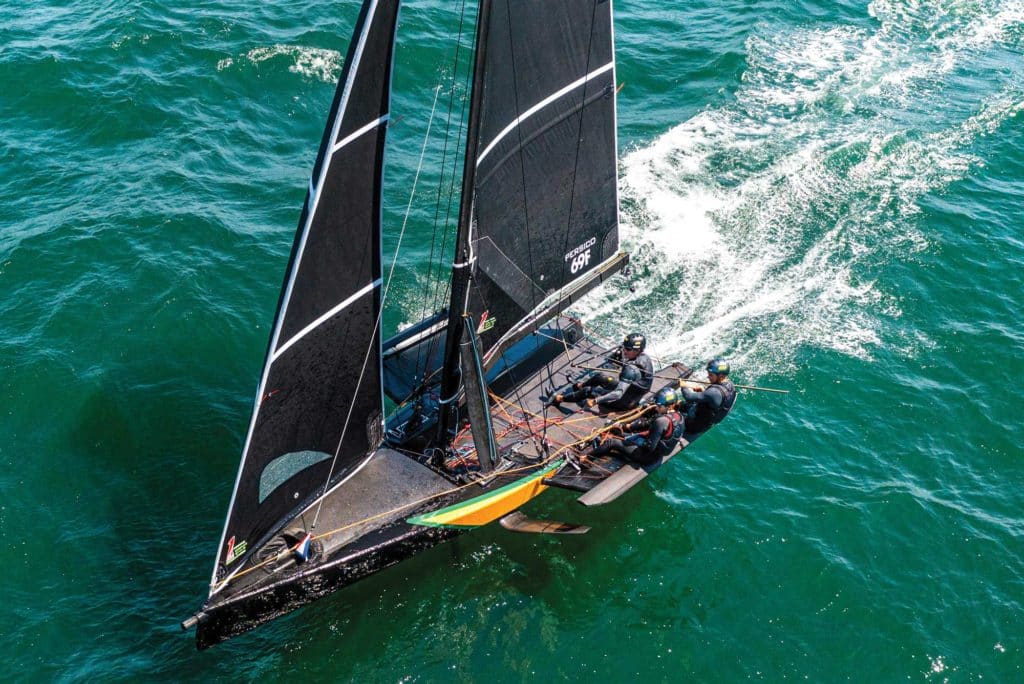
There’s a revolution underway in the sport of sailing, and it can be summed up in one simple word: foiling.
More specifically, we’re talking about hydrofoils , the winglike appendages mounted beneath the hull of a vessel that, at a certain speed, lift the hull clear of the water. When this happens, the foiling sailboats can reach speeds two or even three times faster than possible in “displacement” mode.
And sailboats are just one element of the foiling revolution: Surfboards, paddleboards and powerboats are also getting in on the act.
An Italian naval architect named Enrico Forlanini is credited with developing the first waterborne hydrofoils, which he affixed to a 60 hp, airscrew-driven craft that topped off at 36.9 knots back in 1906. In the century that followed, a series of would-be inventors took a swing at the concept with varying degrees of success. Foiling sailboats finally ascended into the mainstream during the 2013 America’s Cup, when Oracle Team USA beat Emirates Team New Zealand in a match between foiling 72-foot catamarans (the Cup has been contested in foiling cats ever since).
Surprisingly enough, my first foiling experience happened some three decades ago, aboard something called a Hobie TriFoiler, from the popular manufacturer of Hobie surfboards, beach cats and kayaks. The TriFoiler, basically a 22-foot trimaran with a central pod and a pair of mainsails stepped on the twin outriggers, was invented by a fanatical California engineer named Greg Ketterman. The sail controls were laid out just forward of the tiny airplane-style cockpit; you steered with foot pedals. It was so ridiculously easy that even a gremmie like me had the thing foiling within moments of getting in and reaching off.
But after the initial thrill, it was actually kind of boring. Which, I believe, is why it went out of production soon after. The TriFoiler was, unfortunately, way ahead of its time.
Such was the extent of my personal foiling experience until this past summer, when a new class of foiling monohull skiffs called Persico 69Fs rolled into my home waters for a series of races among youth squads in the class’s inaugural season. I got an invitation to take a spin.
After donning my helmet, wetsuit and life jacket, I was handed the helm with a pair of skilled young sailors on board. At 25 knots, we were towed into Narragansett Bay behind a powerful RIB, foiling all the way. It was terrifying. And a preview of coming attractions.
Once the tow dropped us, the sails went up and we bore off. I skied the tiller extension while scrambling out onto the hiking racks. Which sent us off on a screaming reach. Which flipped the 22-foot-7-inch carbon rocket ship.
Twenty seconds into foiling, and I’d capsized the bloody thing. How embarrassing.
The kids, bless them, were kind and patient. We got the whole shooting match, including ourselves, back upright and tried again. The mainsail trimmer sheeted it home, we started to accelerate, and he said: “Here we go! You’re up. You’re flying!” Indeed, we were.
Hard on the breeze in the 12-knot southwesterly, things unfolded quickly. Spray was flying, and I took more than one solid wave to the kisser. I was mostly too frightened to concentrate on anything but driving, but I did glance at the speedo once: 17.4 knots. (I felt pretty chuffed until later learning a 69F’s top speed is 34 knots. Ugh.)
However, I guess I’d proved the point: With a couple of sailors who know what they’re doing, foiling is for everyone. From now on, just call me Mr. Foiler.
- More: Foils , Hydrofoil Boats , Hydrofoiler , November 2022 , Sailboats , Sailing Yachts , Yachts
- More Yachts
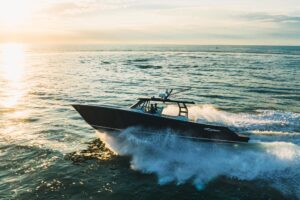
Halo 470 Reviewed
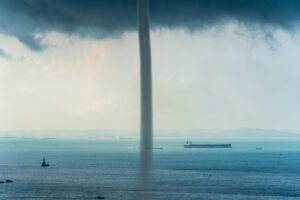
Superyacht Collision, Sinking Incident, Takeaways and Lessons
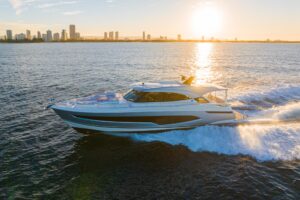
Riviera to Unveil 6800 Sport Yacht at Fort Lauderdale International Boat Show
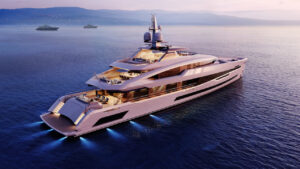
Heesen Reveals “Santosha” Details
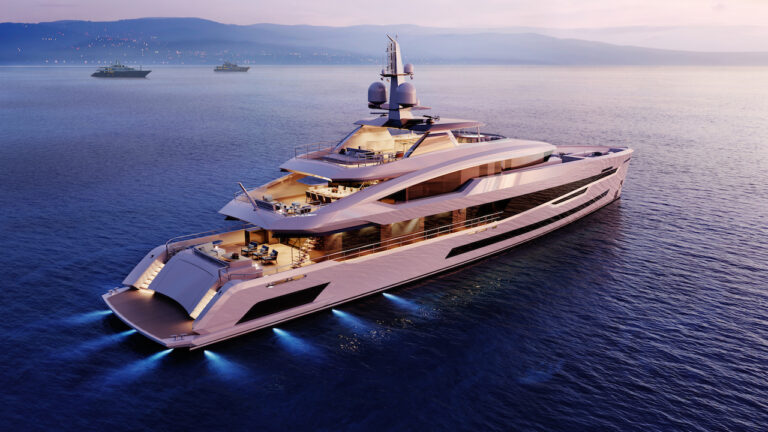
For Sale: 2006 84′ Lazzara
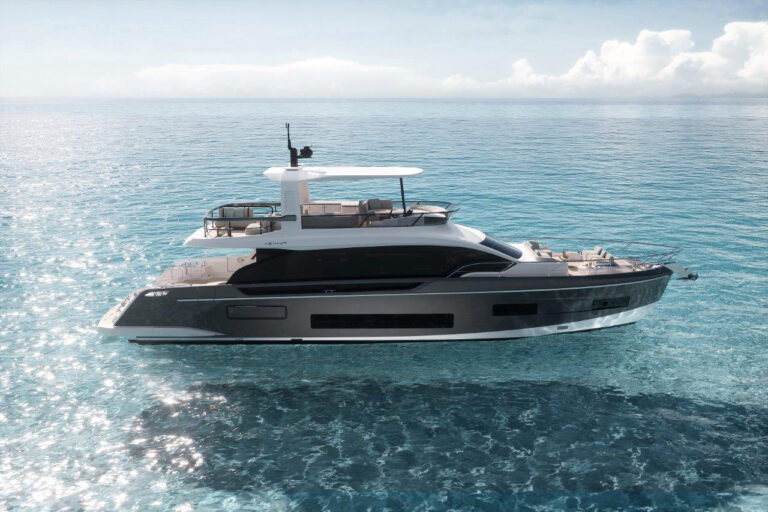
Azimut Launches the Fly 62

For Sale: 2015 Beneteau Swift Trawler 50

- Digital Edition
- Customer Service
- Privacy Policy
- Terms of Use
- Email Newsletters
- Cruising World
- Sailing World
- Salt Water Sportsman
- Sport Fishing
- Wakeboarding
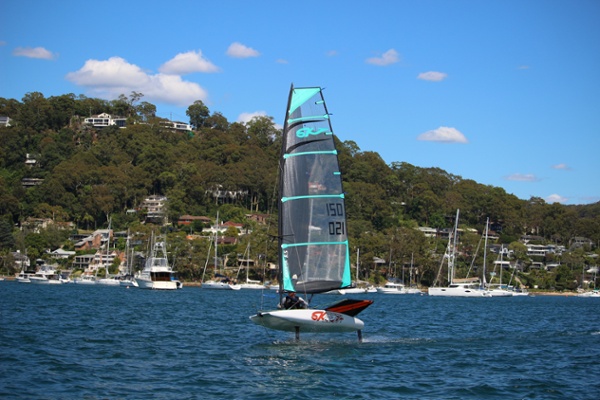
A highly-developed but forgiving foiling machine with amazing performance.
Incorporating all round performance and reliability. Designed for 60 - 100 kg sailors, its the boat where sailors can plane upwind and foil-tack with the best of them. The Skeeta was selected in 2021 by SailGP USA as part of their foiling pathway development programme.
Find out more in the Features section below
Specifications
The Skeeta comes in either the 8.5m2 or 9.5m2 rig option
| Length | 3.6m (12ft) |
| Width without wings | 1.26m |
| Width with wings | 2.3m |
| Hull weight | 35kg's |
| Sail area | 8.5m2 or 9.5m2 |
| Sailor weight range | 60 -100kg's |
Aluminium collapsible beach trolley
Black anodised alloy boom
Two-piece Carbon mast
Foiling kit pre-installed and pre-set
Displacement foil insert tip
Rudderbox with alloy tiller and extension
Padded foil bag
Padded mast bag
Padded full hull cover
Padded hiking straps
Boat Summary
Sailors are no longer left waiting for a breeze to go sailing. The Skeeta is fun and capable of sailing in all safe wind ranges. It is much more stable than narrow skiffs and can be sailed without hydrofoils, making it far more versatile as an all-purpose dinghy. The hull is simple, robust, unsinkable and quick to rig.
Skeeta is suited to sailors of all levels: from beginners to professionals. Add the foils and it is a highly-developed but forgiving foiling machine with amazing performance, close to that of the International Moth. Sailors can plane upwind and foil-tack with the best of them.
The Scow Hull
The iconic scow shape has been around for many generations. Skeeta's hull shape has been optimised for displacement sailing and foiling through more than 50 years of in-house scow development by Jim French and Dr Ian Ward.
The low deck height makes it incredibly easy for people of all ages to be able to get on board quickly and safely. The cockpit area also has padded EVA foam for comfort and grip.
Skeeta's foiling system is a culmination of more than 20 years' development with freely-pivoting foils. The foiling system provides low drag and minimises the risk of crashes experienced by most other foiling systems. At the heart of the control system is a fully-retractable bow wand, which provides unparalleled control and versatility. All this means there is no need to adjust the rudder's angle of attack whilst sailing.
The vertical foils are fully-retractable and do not interfere with the boom when leaving and returning to shore. The lifting foils can be easily clipped on or off, all by the push of a button, meaning there is no need to tip the boat over when rigging or launching.
Sailors can fully-adjust the wand on-the-fly, increasing or reducing the foiling ride-height to the desired level. This allows the boat to immediately and safely return to displacement mode in the event of surprising weather conditions like stormy winds.
All Skeeta's come with inserts that clip into the vertical foils to use for displacement sailing.
Skeeta's wings can easily and quickly be removed in less than five seconds. Just one pin holds them in place, making set-up even quicker. The trampolines are highlighted with bright orange stripes for safety, and come pre-assembled.
The high-performance, over-rotating rig is the product of many years of development. It uses a vang track to dramatically reduce pressure on the mast, reducing the chance of breakages and uncontrolled sail manipulation, whilst still maintaining the high leech tension required for foiling.
The two-piece carbon fibre mast features a halyard designed specifically to make rigging and de-rigging a breeze.
The mast bases are of different lengths to suit the sail size, and all tips and bases are easily interchangeable. Fully adjustable spreaders are standard, allowing sailors of different weights to be competitive in the same class.
All models are pre-assembled and ready to hit the water out of the box.
All foiling systems are pre-set, rig up in 15 minutes and go sailing.
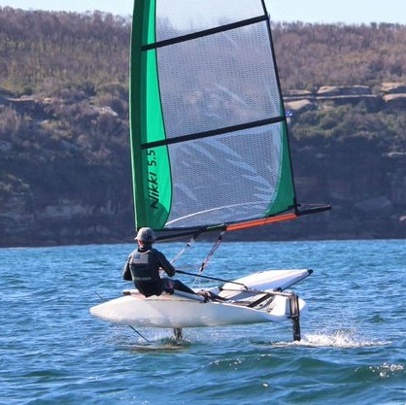
Skeeta and Nikki selected for US SailGP programme
Sorry, there are currently no FAQs for this class
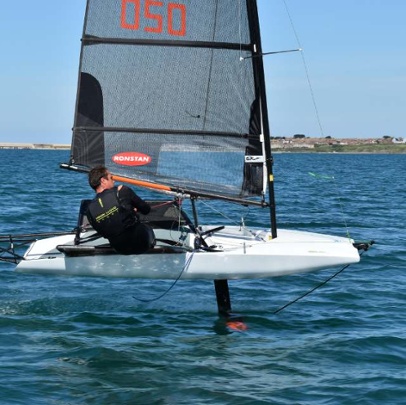
Tuning Tips for Skeeta and Nikki
Are you sure you want to change currency.
NORTH AMERICA'S LARGEST AND MOST ADVANCED DINGHY FACTORY
Country/region
- Australia AUD $
- Austria EUR €
- Belgium EUR €
- Canada CAD $
- Czechia CZK Kč
- Denmark DKK kr.
- Finland EUR €
- France EUR €
- Germany EUR €
- Hong Kong SAR HKD $
- Ireland EUR €
- Israel ILS ₪
- Italy EUR €
- Japan JPY ¥
- Malaysia MYR RM
- Netherlands EUR €
- New Zealand NZD $
- Norway USD $
- Poland PLN zł
- Portugal EUR €
- Singapore SGD $
- South Korea KRW ₩
- Spain EUR €
- Sweden SEK kr
- Switzerland CHF CHF
- United Arab Emirates AED د.إ
- United Kingdom GBP £
- United States USD $

Item added to your cart

fulcrumspeedworks
*NOTE: Sales team will contact you with shipping rates.

WHAT IS IT?
The UFO is a simplistic modern hydrofoiling boat, that allows anyone to fly through the air, freeing the hull from draggy water. More stable than the International Moth -or even a child’s pram- with a simple rig, and a set of fully retractable hydrofoils, all for $11,500 USD the UFO makes flying attainable. Thousands less than it’s nearest competition. Built in the United States in high volume and quality control, the UFO maintains a one-design philosophy, creating close and exciting racing on foils!
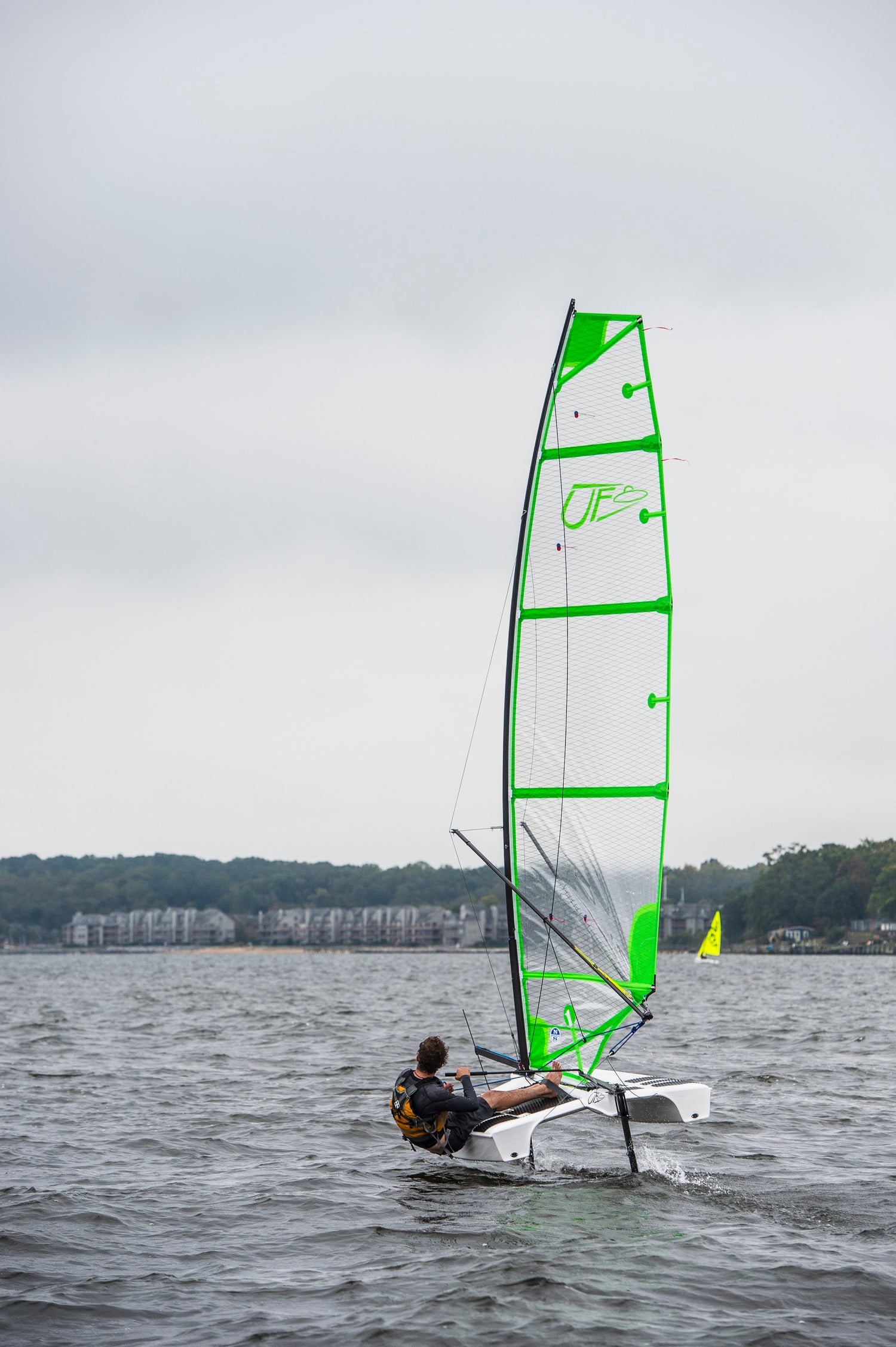
FLY WITH THE UFO
- Designed and built in the USA
- $11,500 USD
- Compatible and rewarding to all skill levels
- Lightweight for easy maneuverability
- Solid, nearly dent-proof, hull
- Unique patented hull and rig designs
- Stable on and above the water
- Small footprint for carefree storage and shipping
- Takeoff from about 8knts of wind
- Fast, fun, easy to control foiling

FUN FOR ALL AGES
The wand system controlling the foils, which can be set to fly very high, very low (even ‘no fly mode’) and all points in between. This means you can progressively add challenges to your UFO experience as you feel ready for them, from ‘beginner mode’ all the way to ‘extreme mode’. Additionally, the highly tunable sail can be set up to provide only the amount of power that your body type needs, and no excess. This means that the UFO is accessible and fun for sailors of all sizes, ages and skill levels. Merely set up the boat for your skill level and body type and go play around.
The UFO is very broadly applicable and has flown payloads from 70 pounds -a tiny kid- to 270 pounds -a tall grown man and a teenage boy-. The foil package just needs power to climb. Ultra light sailors have been caught on camera flying in 5 knots of breeze and the baseline for 225 pound sailors to take off is 10 knots. 270 flies in 12 knots of breeze.
SETUP AND BREAKDOWN
While the boat can be left on shore with everything in place, but the sail down, that doesn’t mean the UFO isn’t easy to put together or take apart. Quite the opposite. Simplicity begets simplicity and the boat is a cinch to put together and take apart.
MANAGEABILITY
Being small is it’s own reward when it comes to handling the boat through all sailing experiences. When you start to really push yourself learning to foil, there are good odds you’ll manage to capsize it. The UFO is easy to right from capsizes and even full “turtle” inversions. This last part is critical, because when catamarans are too heavy to right from turtle the only option is to make the mast float. This has the unintended downside of making the boat very likely to blow away from you. The UFO is designed to stay right alongside you in the event you are separated from the boat. Additionally, the boat possesses an uncommon “park” mode in which it will hold station of its own accord, apparently indefinitely without external input of any kind. The full benefits of that upside have not begun to be fully exploited.

FOILING AT ALL POINT OF SAIL
The Fulcrum design team strictly adhered to the axion “if there’s a point of sail (say, upwind or downwind) that it can’t always foil on, you can’t call it a foiler”. The design team achieved their goal and the UFO is a fully flying boat on all points of sail, which drastically increases its fun-factor.
At what points of sail does the UFO foil at?
The UFO fully foils at all points of sail. Upwind, downwind and reaching. Additionally, you can set it to not foil when you’re tired and it will do that as well, so you can get home easily. These two factors make the UFO uniquely good for learning to foil.
Who can fly the UFO?
Within reason, anyone.
UFO pilots have ranged from 8 years old to 72, from 90 pounds to 235. Young sailors do well sailing as pairs or with a middleweight to light adult. It’s rare that anyone on the fulcrum team conceives of a boat with a narrow niche in mind. Why bother? It’s a mistake in yacht design to design a boat for a narrow range of users, when for the most part people are diverse and the objective of one-design boats is to garner large fleets. That said, the boat is likely to be most satisfactory in all wind conditions in the hands of teens, small and medium men and all women. At the extreme low end of the weight range, sailors may find themselves overpowered and at the extreme high end, the wind speed required for takeoff is about two knots higher than average. UFOs have been sailed “two up” as well, though the above limits of weight range still apply to the sum of the two sailors weights.
What wind and waves can I fly a UFO in?
The UFO will sail in practically any wind condition. However, it’s important to remember that with all sailboats there are days that are great to sail in and days where you do something else.
While the UFO can at times with a skilled skipper take off in very low wind speeds, the baseline for reliable flight is around eight knots. Trying to squeeze enough power to fly out of too little wind is tiresome and in those circumstances, it’s best to do something else. In 8 knots and above, flying is magical and unforgettable. In under 8 knots, the UFO reverts to being a pleasant displacement catamaran and goes from being exciting and fast to relaxing and tactical. This is another benefit of being a catamaran.
Over the last six years the UFO has proven to be uniquely good at flying safely and consistently in very high windspeeds. In multi-class foiling regattas the UFO has proven to be the only foiler built to date that simply loves high windspeeds. In winds above 22 knots when other foiling boats make for shore, the UFO wants to keep playing. The upper wind limit is more a matter of taste and skill. UFOs have been sailed in 36 knots, but that requires a great deal of skill and focus. The UFO rig having shared DNA with a windsurf rig seems to play a part in the boat’s remarkable ability to get a kick out of big wind. Since the upper wind limit on the UFO is so much higher, this makes the number of optimal days to fly a UFO (if skilled in sailing one) higher per year than with any other production foiling boat.
Most chop and wave conditions present no issue for a UFO set for the days’ conditions. After all, powered hydrofoils were first developed by various leading Navy’s as a means of smoothly flying over challenging sea-states. Choking up the ride height helps the UFO fly smoothly through the bottom of the wave pattern, undeterred. Rolling seas present even less issue, as the UFO will ride along them just like any other. Extremely tight and tall chop can be very annoying, which is not peculiar to the UFO.
Waves do effect baseline windspeeds to achieve takeoff. Imagine getting a plane to take off on a bumpy runway. This is true for all hydrofoil boats. In choppy water, ten to twelve knots can be necessary to achieve fully easy takeoffs. Some UFO sailors use aggressive kinetic techniques to overcome this and take off in choppy water and low wind.
Will I fly my first time out?
Most people do, but bear in mind that flying is a whole new experience and it takes some learning.
Conditions, setup and technique matter and if you use it incorrectly, you are likely to get some degree of incorrect results. That’s the challenge that the UFO is built to address. Over six years on the market and over 500 boats delivered, the UFO has proven to be the best and most reliable platform for ordinary sailors to reliably teach themselves foiling technique on.
What happens when I crash my UFO into something?
You’ll probably do some damage to it.
The UFO is built with durability as a core objective but it’s worth noting that the gulf between “Feather light under engineered ragged-edge high performance craft” and “literally indestructible” is extremely wide. The UFO represents neither of these extremes. Do not attempt your first flight inside a densely packed mooring field. Obstacles only make you better once you’ve mastered the basics.
How easy is it to rig a UFO?
Best in class, vs other foiling boats on the market. With that said, it’s not easier than doing nothing. Doing nothing is very easy! Putting a boat together is worthwhile but obviously involves effort.
The current cartop to launched speed record is roughly 15 minutes. Socket the mast together. Attach the boom and stays in one go. Step the rig. Flip the boat on its side, insert the foils, right the boat, hoist the sail and launch. Complexity is best avoided.
Leaving the UFO on a dock or a beach with the rig in and the foils simply in the “up” position, achieves an ease of daily use on par with any light beach cat. To go foiling all you need to do is hoist the sail with the halyard, clip the sail to the boom and attach the downhaul line and you’re ready to launch. This brings setup and breakdown to a matter of five minutes or less.
How do I launch and land a UFO?
Far far far more easily than any other foiling boat on the market.
Because the UFO is a very small catamaran, while floating the hulls float relatively deep in the water and create lateral resistance, like the hulls on a hobie 16 or hobie wave. This means that it can sail upwind without a daggerboard of any kind in the water. This is not the case with non-catamaran foilers. The rudder is outfitted with a friction brake and a down-halyard to allow its depth to vary and allow steering in shallow water. So from 16 inches of water and beyond, you can sail away from and back to shore reliably.
Because the UFO’s forward foil assembly is located in front of the mast, the UFO can tack and gybe while the forward foil is fully withdrawn from the water. This is unique. It allows the UFO to navigate reliably in the period between launching or landing and flying. The benefits for usability and safety cannot be overstated.
Once you’ve got to deep enough water, lower your foils fully and fly away!
That’s if you’re using a dolly.
If you aren’t using a dolly, the UFO has even more party tricks to show off. Since the foils withdraw to above the waterline of the hull, the hull can be beached or slid up onto a dock float or boat deck without any risk to damaging the foils. The UFO is a boat that’s eager to go sailing.
Can I easily cartop a UFO?
At this hull weight, the boat is very easy to put on top of a car, and its flat bottoms allow it to be strapped down hard with no drama. The other components of the boat collapse down to the point of easily fitting in a standard hatchback.
Where can I store my UFO?
Anywhere you can carry it to. Anywhere it fits.
Behind couches, under beds, under porches, in basements, inside larger boats, chained to apartment fire escapes, hanging in garages. Anywhere it can go that’s convenient for your lifestyle is a good place for it to go.
Why does X look like Y? Surely it would be better to make it like Z.
Just trust us.
If you’ve thought of it, we’ve weighed the pros and cons and its been included or excluded for good reason. Creating a boat that can be produced at an affordable price, for a wide range of sailors with a maximum quantity of accessible performance is an extremely hard target to hit. The UFO meets all of its objectives and does so by blatantly ignoring a few conventions and norms. You simply don’t make an omelet without breaking eggs.
- Choosing a selection results in a full page refresh.
- Opens in a new window.
Hydrofoil Manufacturer
Ultra-modern, lighter = better, craftsmanship, dna is the hydrofoil manufacturer, with all the knowledge and skills of the composite makers of holland composites.
DNA Performance Sailing is THE hydrofoil manufacturer. The team that builds your foiling boat consists of passionate sailors. Thanks to their own year-long experience in sailing, they know exactly how to build the perfect foiling boat and hydrofoils. The team realizes your specific wishes within the professional and extensive production facility of Holland Composites; for over 25 years the manufacturer of the best composite products in the Netherlands and far beyond.
We build your new foiling boat!
Tf10 foiling trimaran.
The TF10 foiling trimaran is a proprietary product of DNA Performance Sailing, designed by Morrelli & Melvin . The production of this foiling multihull takes place entirely at DNA’s own shipyard. This also applies to the hydrofoils.
Hydrofoils are produced in our specially equipped Autoclave .
NACRA 17 FOILING CATAMARAN
DNA Performance Sailing produces the daggerboard foils and rudders for the Olympic Nacra 17 catamaran class. Since the selection of the first foiling sailing class within the Olympic Games, DNA has been selected to provide the sailors of this worldwide class with high quality carbonfiber hydrofoils.
F1x A-CLASS FOILING CATAMARAN
DNA Performance Sailing is the founder of foiling within the international A-class. Since 2014 we have made it possible for these catamarans to foil within the boxrule of this class, with the help of our specially designed and produced hydrofoils.
MOD70 TRIMARAN
Our high quality hydrofoils produced for the above classes, have convinced owners of the spectacular so-called MOD70 trimarans to choose our hydrofoils as well.
The design of these hydrofoils comes from top designer Martin Fischer .
G4 EN F4 FOILING MULTIHULLS
The G4 and F4 foiling multihulls designed by DNA Performance Sailing, fly above the water using hydrofoils designed and produced by us.
These boats and their hydrofoils are no longer part of our range.
Are you looking for a lightweight composite solution, for example for your boat, like hydrofoils or other components? Challenge us to create your need for custom carbon parts.
Schrijf je in voor onze nieuwsbrief en blijf op de hoogte van de nieuwste ontwikkelingen!
Registrieren sie sich für unseren newsletter.
lassen Sie sich über die neuesten Entwicklungen informieren!
- E-Mail-Adresse *
- Email This field is for validation purposes and should be left unchanged.
Schrijf je in voor onze nieuwsbrief
blijf op de hoogte van de nieuwste ontwikkelingen!
- First name *
- Last name *
- Emailaddress *
Wij gebruiken cookies om u de beste online ervaring te bieden. Door akkoord te gaan, accepteert u het gebruik van cookies in overeenstemming met ons cookiebeleid.
Wanneer u een website bezoekt, kan deze informatie in uw browser opslaan of ophalen, meestal in de vorm van cookies. Beheer hier uw persoonlijke cookiediensten.
- wordpress_test_cookie
- wordpress_logged_in_
- wordpress_sec
Visit our Popular Forums
- Monohull Sailboats
- Multihull Sailboats
- Powered Boats
- General Sailing
- Antares Yachts
- Fountaine Pajot
- Lagoon Catamarans
Cruising Business
- Boat Classifieds
- General Classifieds
- Crew Positions
- Commercial Posts
- Vendor Spotlight
Life Aboard a Boat
- Provisioning: Food & Drink
- Families, Kids, & Pets Afloat
- Recreation, Entertainment, & Fun
- Boat Ownership & Making a Living
- Liveaboard's Forum

Seamanship, Navigation & Boat Handling
- Seamanship & Boat Handling
- Training, Licensing, & Certification
- Health, Safety, & Related Gear
- Rules of the Road, Regulations, & Red Tape
Engineering & Systems
- Const. / Maint. / Refit
- Product / Service Reviews
- Electronics: Comms / AV
- Electrical: Batts / Gen / Solar
- Lithium Power Systems
- Engines & Propulsion
- Propellers & Drive Systems
- Plumbing / Fixtures
- Deck Hdw: Rigging / Sails
- Aux. Equipment & Dinghy
- Anchoring & Mooring
Photo Categories
- Member Galleries
- Life Onboard
- Sailing in the Wind
- Power Boats
- Cruising Destinations
- Maint. & Boat Building
- Marine Life
- Scuba Diving & Divers
- General Photos
Recent Photos

Listing Categories
- African Cats
- view more »
- Crew Wanted
- Crew Available
- Enhance Your Account
- Meet the Mods
- Meet the Advisors
- Signup for The Daily Cruiser Email


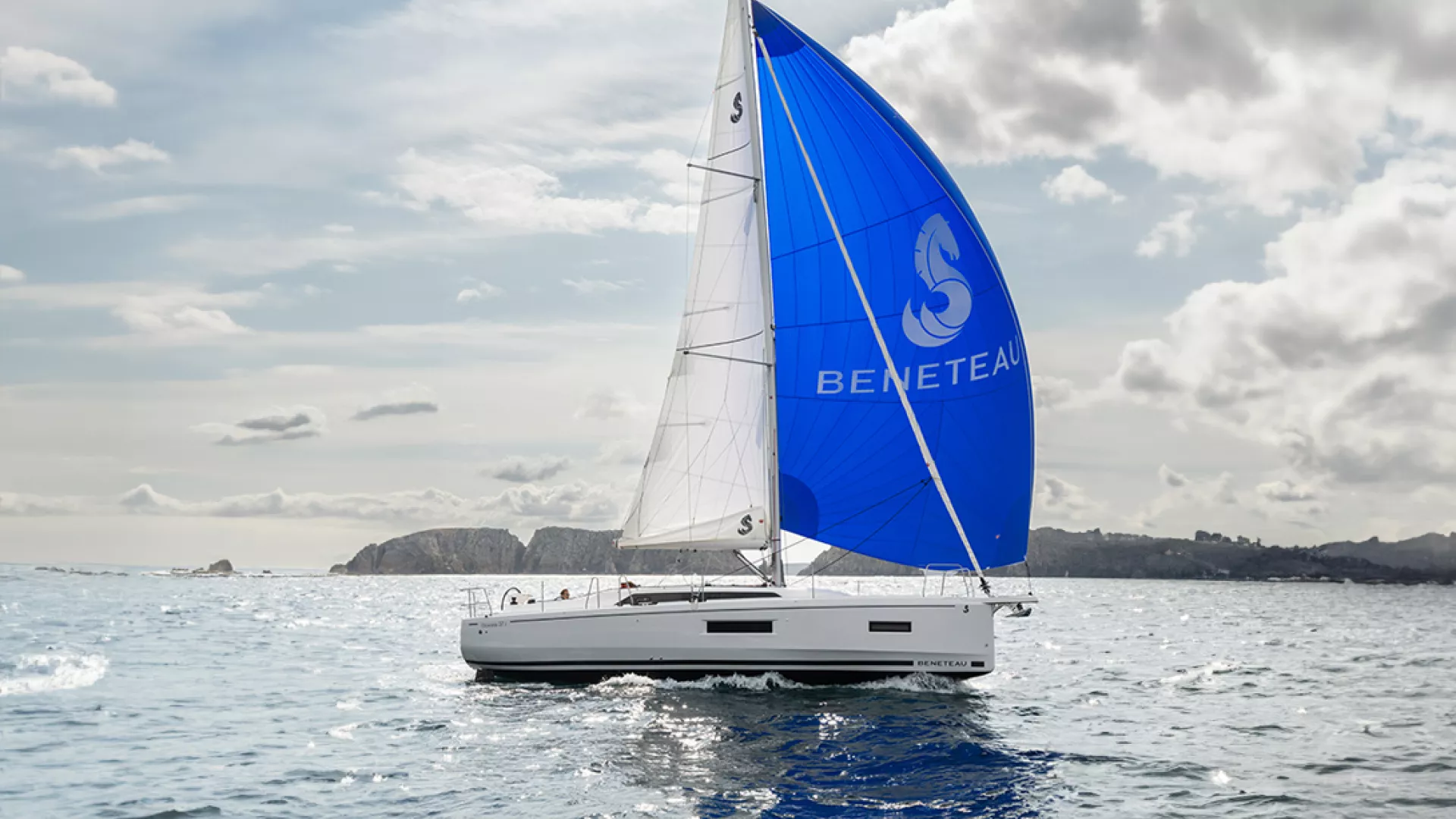
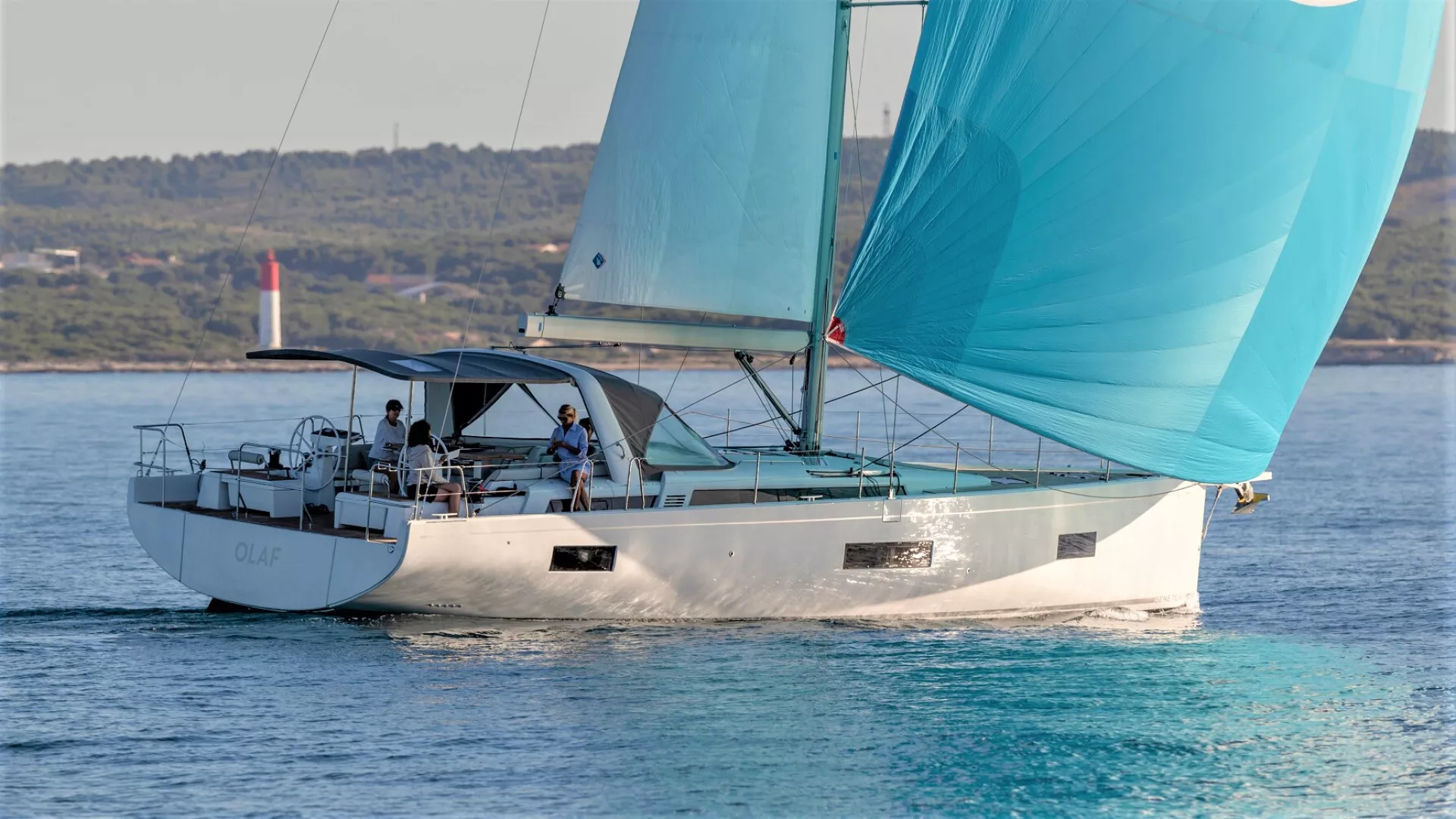
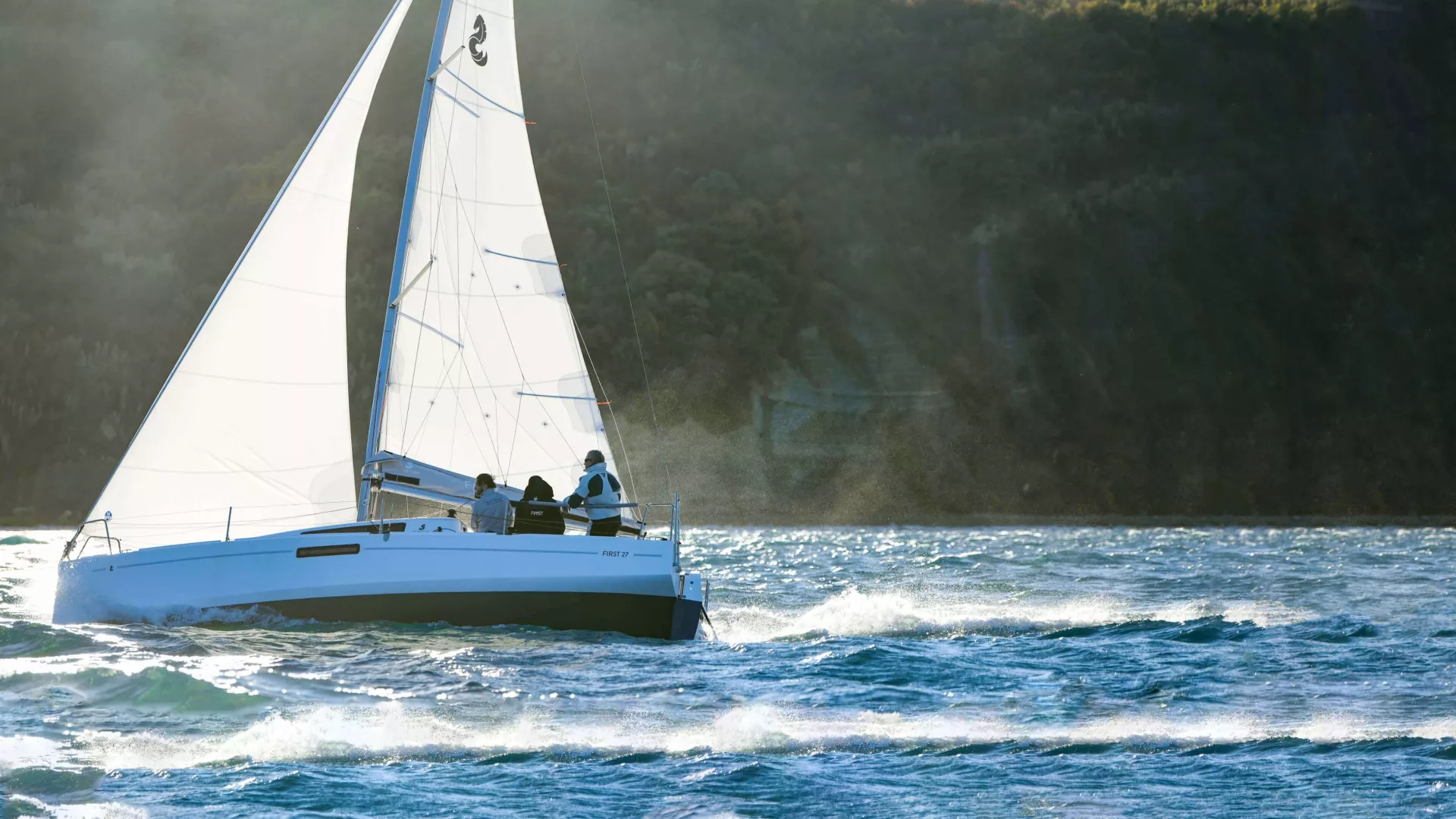
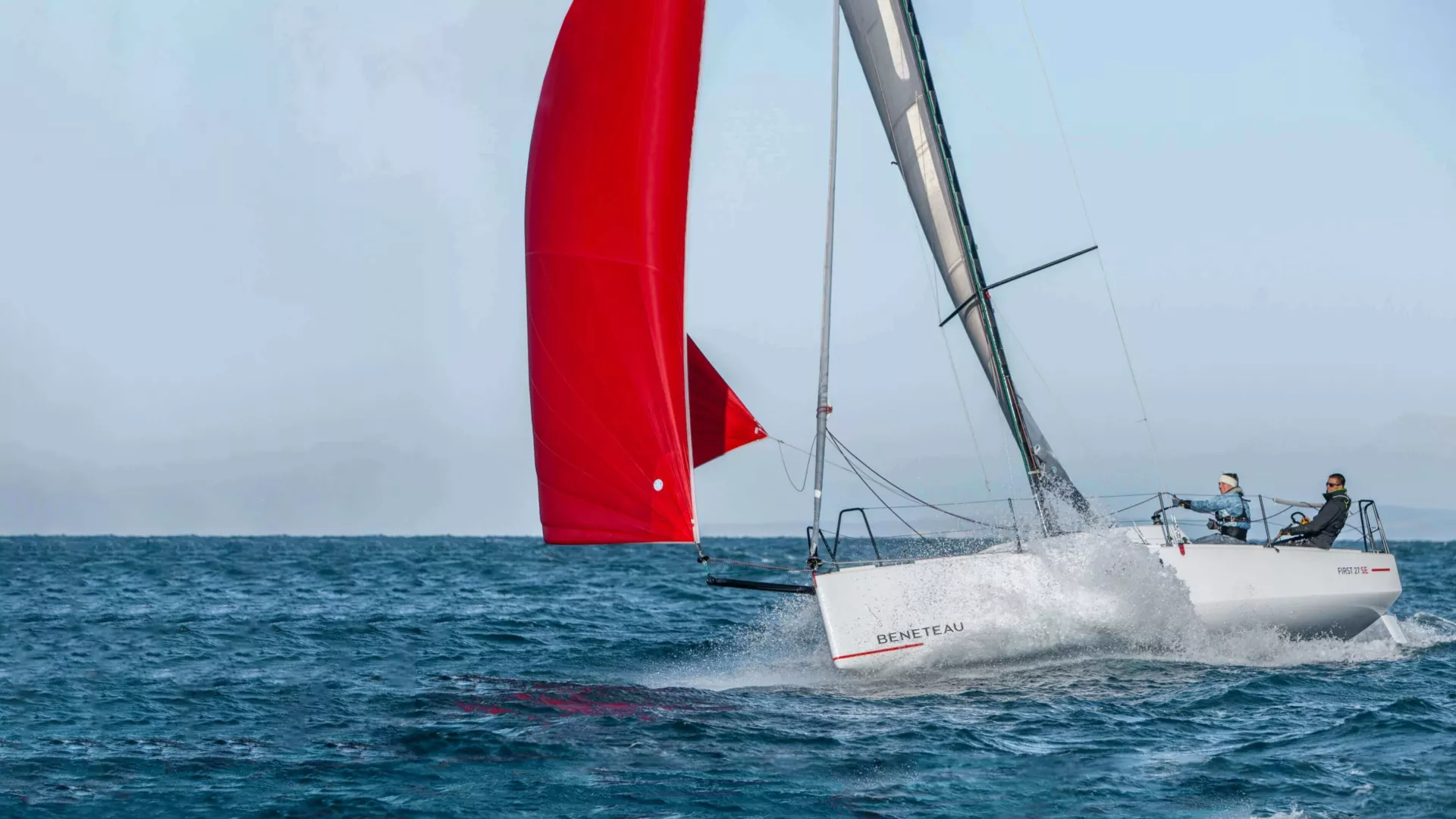
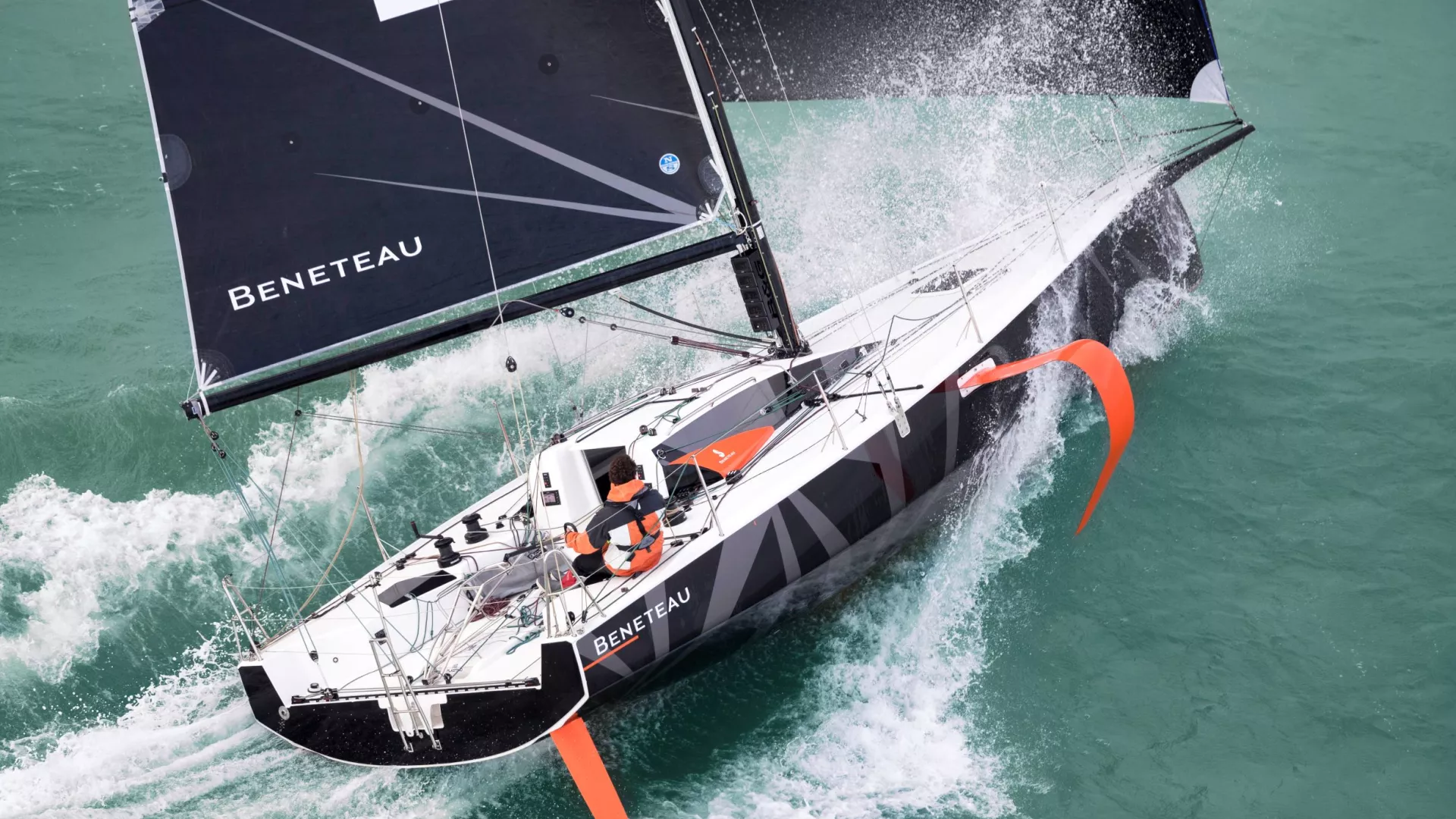
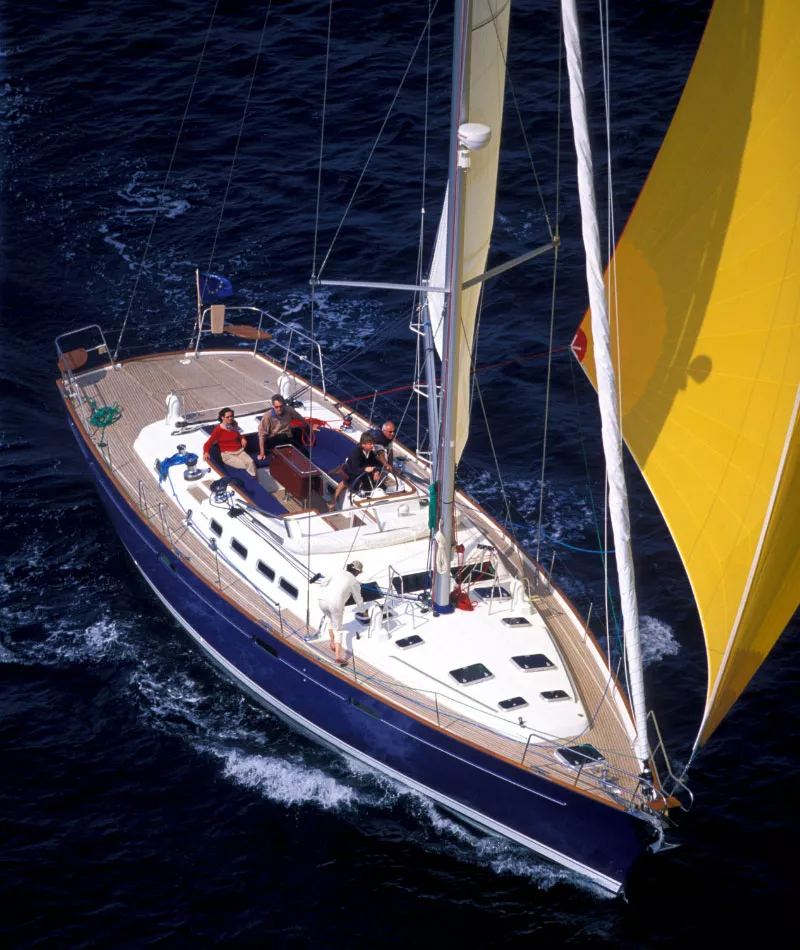
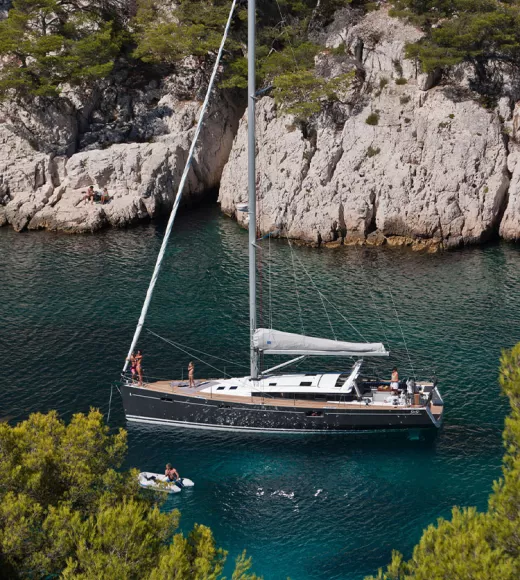


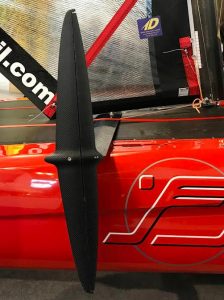
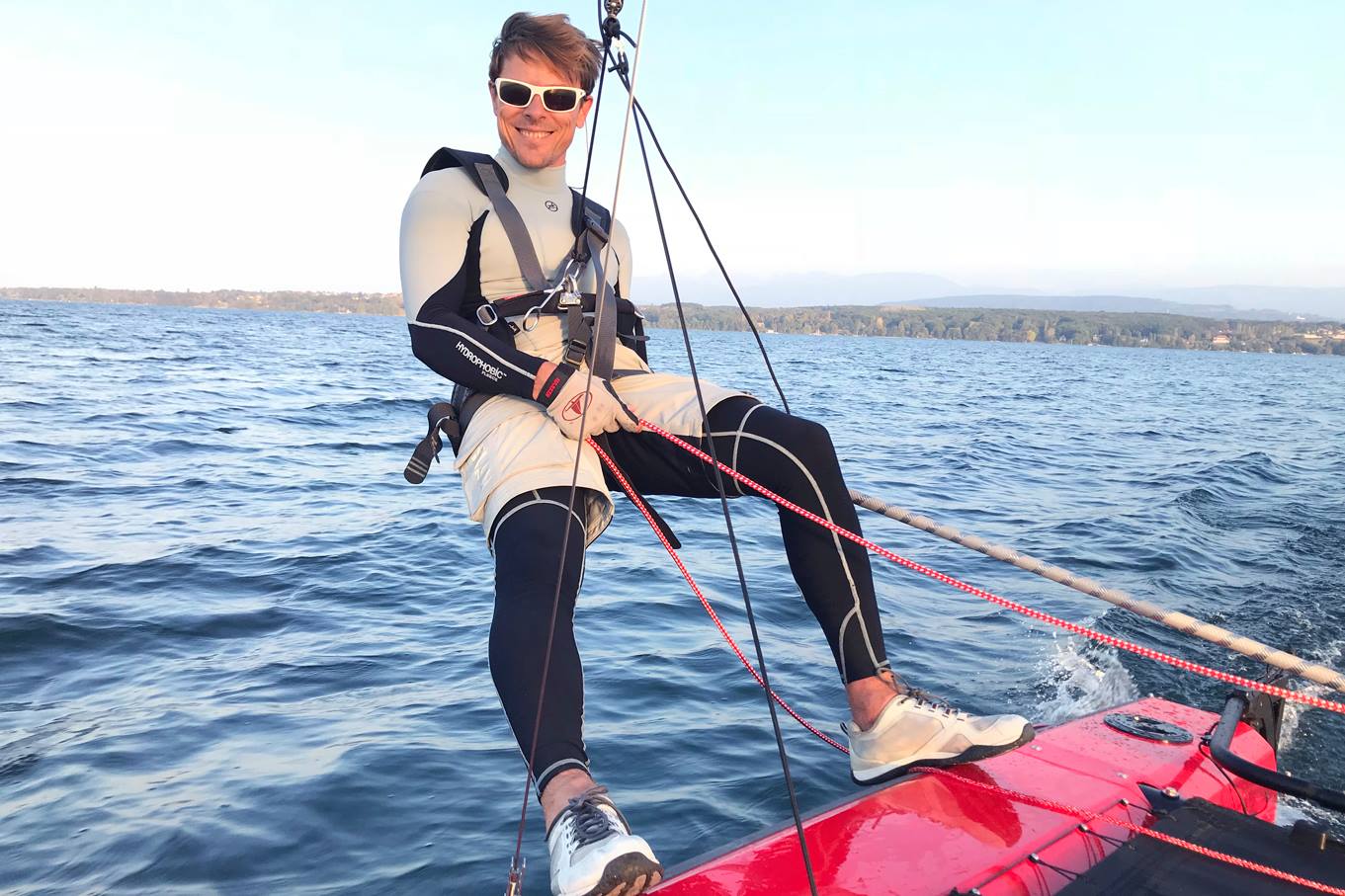

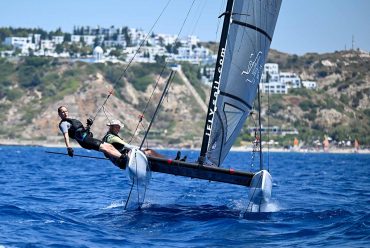
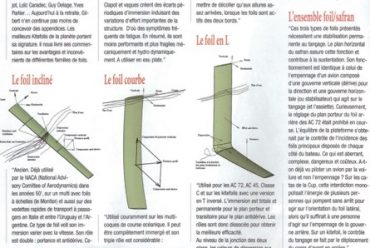

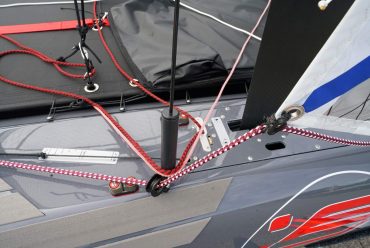
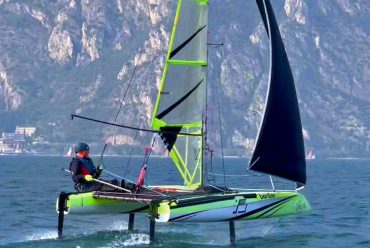
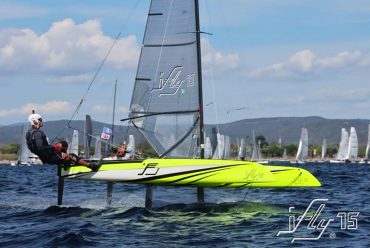
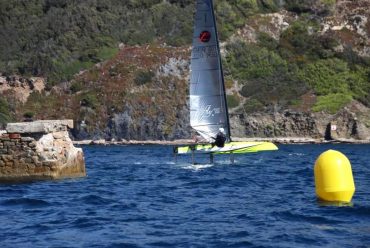
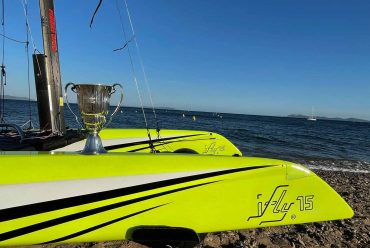



















IMAGES
COMMENTS
Shortly after her re-launch at Easter, it was clear that the team had raised the game. "We can now foil upwind in just 8 knots of breeze," said Monnin. "And when the breeze builds to 12 ...
Mar 4, 2024. Original: Apr 13, 2017. Although still in development, the Beneteau Figaro 3 represents the cutting edge of production foiing monohull design. Image Courtesy of Beneteau. Examining Vendée Globe boats on the dock in Les Sables d'Olonne prior to the start of the race last November, one thing was perfectly clear: the genie is out ...
The Figaro BENETEAU 3 is the first production foiling one-design monohull ever created.It is a distillation of technology and innovation, the result of a collaboration between some of BENETEAU's best experts and the Van Peteghem Lauriot-Prévost (VPLP) office, the architects of the last two boats to win the Vendée Globe.. The prototype has been tested and the production of the boat has been ...
The history of foiling. The early development of hydrofoils started over 100 years ago when Italian Enrico Forlanini achieved 36.9 knots with his 60hp airscrew-driven boat in 1906. Several ...
The first production foiling one-design monohull, the Figaro Beneteau 3, is big news in the world of foiling sailboats. Created through a collaboration of Groupe Beneteau's expert design team and winning Vendée Globe boat architects Van Peteghem Lauriot-Prévost (VPLP), the Figaro Beneteau 3 is certainly turning heads.
Sailing hydrofoil. A sailing hydrofoil, hydrofoil sailboat, or hydrosail is a sailboat with wing-like foils mounted under the hull. As the craft increases its speed the hydrofoils lift the hull up and out of the water, greatly reducing wetted area, resulting in decreased drag and increased speed. A sailing hydrofoil can achieve speeds exceeding ...
The Eagle Class 53's roots lie firmly with the foiling America's Cup catamarans. Even in displacement mode she's an exhilarating ride. The goal is to achieve fully foiling performance. It is ...
From racing sailboats to weekend cruisers, foils represent the industry's next sea change. ... Candela, the only builder with a production line, is convinced foiling is the future. High-volume ...
Jul 22, 2024. Original: Nov 30, 2018. With the TF10, big-boat multihull foiling is now available to amateurs as well as pros. Any time I put a helmet on I become hyper-aware of every step I take. Precaution means there's an alternative to a happy ending. On one of my last rides of the 2018 summer season, the helmet was mandatory, as was the ...
Foiling sailboats finally ascended into the mainstream during the 2013 America's Cup, when Oracle Team USA beat Emirates Team New Zealand in a match between foiling 72-foot catamarans (the Cup has been contested in foiling cats ever since). ... Which, I believe, is why it went out of production soon after. The TriFoiler was, unfortunately ...
10. New Zealand 'R' Class skiff. In New Zealand they love their skiff sailing, and development classes like the doublehanded 'R' Class are prime for new features. The 'R' Class started its project to get the fleet foiling back in 2008 and now there are a clutch of boats racing.
The Skeeta. A highly-developed but forgiving foiling machine with amazing performance. Incorporating all round performance and reliability. Designed for 60 - 100 kg sailors, its the boat where sailors can plane upwind and foil-tack with the best of them. The Skeeta was selected in 2021 by SailGP USA as part of their foiling pathway development ...
The UFO rig having shared DNA with a windsurf rig seems to play a part in the boat's remarkable ability to get a kick out of big wind. Since the upper wind limit on the UFO is so much higher, this makes the number of optimal days to fly a UFO (if skilled in sailing one) higher per year than with any other production foiling boat. WAVES:
DNA Performance Sailing is the high-quality boat building division of Holland Composites, the composite production company based in Lelystad, The Netherlands. DNA builds state-of-the-art foiling multihull sailboats. A passionate team works here from the design, the complete construction and detailed finishing to the delivery of the boat to the ...
Thanks to their own year-long experience in sailing, they know exactly how to build the perfect foiling boat and hydrofoils. The team realizes your specific wishes within the professional and extensive production facility of Holland Composites; for over 25 years the manufacturer of the best composite products in the Netherlands and far beyond.
Production Boats with Foils. For those who love sailing fast, there is a new look in production boats. Following the example set by the Vendee Globe IMOCA Foil boats, there is a new design, production boat, made for fast foiling fun. This boat is not designed as a cruising boat. But I think it will be a sign of things to come as more ...
Officially, the BirdyFish will fly in upwards of 12 knots of wind. But with a trained crew, the boat can take off from 8 knots. Finding the right angle, producing just the right amount of power at ...
A marvel in racing innovation, the Figaro BENETEAU 3 is the first production foiling one-design monohull to ever grace the seas. Designed in collaboration between BENETEAU and Van Peteghem Lauriot-Prévost (the architects of the last two Vendée Globe winners), her greatest and most visible feature is the inverted foiling system created to ...
The Great Divide: Foiling vs Floating. Charles J. Doane. Feb 25, 2020. Foiling has only made sailing that much larger. Photo courtesy of Foiling World. I well remember the first time I ever saw a flying sailboat. I was on Narragansett Bay several years ago, test-sailing one of those old-fashioned boats—the ones with hulls that float in the ...
The flight control system, combined with numerous fine-tuned innovations, ensures safe foiling even in strong winds and rough seas.. Stable flight attitude allows pushing hard, so in good conditions, iFLY reaches high boat speed beyond 30 knots in a controllable way. IFLY15 offers freedom to fly alone or in pairs.
Despite several years of foiling behind us now, most of the world's sailing records are still held by non-foiling boats. But if foiling boats are so much fas...
Although foiling or hydrofoiling feels like a recent revolution to take the world of watersports by storm, it is actually much older than many appreciate. ... Monitor - the 1955 foiling boat ...
Something new is being offered to members of the Portsmouth Freedom Boat Club. Sat, 24 Aug 2024 12:30:49 GMT (1724502649564) ... Members have a chance to get in the water and try the growing sport ...
Decked in a metallic "Metal K"-colored livery, the AC75 marks the 10th Luna Rossa America's Cup hull unveiled since the first boat in 1999. Built at the Persico Marine shipyard in Nembro, Italy ...
Not only the first foiling superyacht - or foil-assisted superyacht, but the first cruising yacht with a foil, the 142ft Canova is a groundbreaking project in so many ways, says Toby Hodges